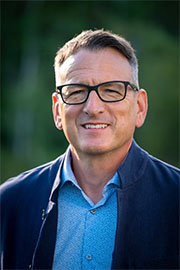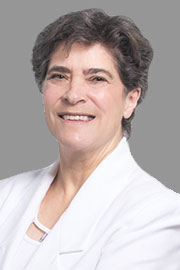- Apr/10/24 3:20:00 p.m.
I want to thank the member from Timiskaming for the comments today. It’s kind of nice, on this afternoon, to have a conversational debate rather than a head-to-head debate.
I remember the first time I was working at—I had a job in Geraldton. I was driving up Highway 11, and you get to about Barrie and then the farms disappear and it all becomes bush. You keep driving and driving for another—I don’t know—five or six hours, and then somewhere north of Timmins, the land opens up. There’s this huge valley and there’s all this farmland there. It’s the Clay Belt, and it was the first time I had ever learned about the Clay Belt.
You’re obviously a farmer from the Clay Belt. You’ve got a lot of experience there, and you said that climate change is actually impacting the Clay Belt, as well, and that you were able to grow, I think you said, canola for the first time, which you weren’t able to before, but it’s also having an impact on winter wheat. Can you talk about some of the impacts on Clay Belt farming of climate change?
- Hear!
- Rabble!
- Apr/10/24 3:20:00 p.m.
Questions?
Further questions?
- Hear!
- Rabble!
- Apr/10/24 3:20:00 p.m.
Great fund.
- Hear!
- Rabble!

- Apr/10/24 3:20:00 p.m.
Dining room.
- Hear!
- Rabble!
- Apr/10/24 3:20:00 p.m.
A pretty informal question: You’ll speak again—it’s a vote-in-favour speech; I really appreciate it. But the member and I have had some great conversations over the past five or six years about the exciting opportunity for agriculture in northern Ontario. In fact, I think we have consensus around the notion that northern Ontario may actually be the biggest and best play for the future of agriculture in Ontario, and the Clay Belt in the Thunder Bay region and, of course, the beginning of the Prairies, official, in the southern part of my riding are extraordinary examples of what we can accomplish.
We still have barriers, and I’ve appreciated the member’s counsel on addressing some of those barriers: for example, the supply chain, grain elevators, the distances that are travelled, arable land and tile drainage. I just wonder if the member opposite would reflect on some of the conversations that we’ve had and perhaps share his appreciation for some of the things that the Northern Ontario Heritage Fund in particular has been able to do to support that—
- Hear!
- Rabble!
- Apr/10/24 3:20:00 p.m.
I’ll just offer the member from Timiskaming a quote and ask him to offer his observations on it. This comes from Aaron Coristine of the OGVG, Ontario Greenhouse Vegetable Growers. He says:
“For greenhouses, there’s a well-known piece of infrastructure that falls under the ARIO Act, and that is the Vineland Research and Innovation Centre. In partnership with Vineland, every year we work together to create novel projects and deliverables for our growers that can assist them in their efforts in integrated pest management, production capacity and innovative approaches to working under different climatic conditions to optimize growth.
“With the support that the greenhouse sector has of ARIO, we’re excited for what the future can bring and the collaborations with academic and institutional stakeholders so that we can continue to expand our production capacity.”
I simply invite the member to offer his comments and observations.
- Hear!
- Rabble!
- Apr/10/24 3:20:00 p.m.
The dining room. Where better to have a reception for Farm Fresh Ontario than in the dining room?
I brought this up earlier, right? When you don’t consult—again, when this government proposed to allow the division of farms into up to three without any consultation, they didn’t know, didn’t realize the havoc they were going to cause because they never asked anybody, or they just decided to help out one group. So many members on the government side came over to me and said, “You know, John, we were about to stop that.” No, no, no; it never would have become public if that had been the case.
But this is an example that it can be done well, and you have done it well on this bill, and we commend you for it. As a result, this bill’s going to pass this afternoon, I hope.
So with that, I’m going to leave a minute on the clock, because I could see people—even the Speaker’s eyes are starting to—I’m getting a bit worried.
Interjections.
I have said this publicly: I have family in Oxford county. If I could trade my land acre for acre for land in Oxford county, for its productive capacity, I would do it in a minute—or even two to one.
But having said that, there is incredible opportunity in northern Ontario—tile drainage, specifically, from the heritage fund. The minister may not know, but the original application for tile drainage to the heritage fund—I wrote it before I was a politician. Anyway, without tile drainage, agriculture will never truly flourish in Ontario. It is one of the best infrastructure investments that can be made. It’s long-term. My dad tiled a farm in 1971 in Earlton with cement tiles—
It’s not canola; canola has always done very well in the Clay Belt, because canola is actually a cool-weather crop. It’s soybeans. We’re starting to be able to grow soybeans—or we grow a lot of soybeans, not starting. And grain corn: I’ve always grown silage corn to feed cattle, but grain corn is starting to be profitable.
But our weather—and again, I’m not a climatologist—is becoming a bit more extreme, less predictable. Overall, likely, in the Clay Belt, in northern Ontario, we will be winners in the climate change draw, but we’re a very small place compared to the rest of the world.
Actually, when ARIO and the University of Guelph were thinking about shutting our research station down, we struck a committee, and one of the first places we went to look at was Vineland, to see how they were structured, because they’re structured slightly differently than many of the other sites. It was very informative, and many of the ideas that we got to try to save our research station, although our conditions are completely different—completely, totally different. But the way they look at the situation—we were very impressed. And I agree with everything that was in that statement.
- Hear!
- Rabble!
- Apr/10/24 3:30:00 p.m.
I want to thank the member opposite for his speech today and taking the time to speak and bringing my interest up on going to Earlton. I look forward to it. I look forward to seeing him there and the SPUD facility as well. The great thing about these jobs is, you go to places that you may not otherwise have had the opportunity or the need to go to. So I thank him for that.
One of the things that he spoke about was Elora, the research going on there, the dairy research, in particular, and how producers have access to those facilities. I’m wondering how he feels on how we can increase the dissemination of that information and the access to the findings and the development of particularly for the north and seed development and increasing the cash crop because of the research going on.
- Hear!
- Rabble!
- Apr/10/24 3:30:00 p.m.
Thank you to the member from Timiskaming–Cochrane. I always learn a lot about farming and agriculture when you speak. I wonder if you can talk about how the frequent closures of Highways 11 and 17 affect farmers and their products.
- Hear!
- Rabble!
- Apr/10/24 3:30:00 p.m.
Further questions?
- Hear!
- Rabble!
- Apr/10/24 3:30:00 p.m.
This is a rather interesting bill for me. I’ve thought a lot about how I was going to start off talking about it. But when the member from Timiskaming–Cochrane was standing up talking so much about the SPUD unit, I had to come along with this, because as he kept talking about SPUD, SPUD, SPUD, all I could think of was Stompin’ Tom Connors and his song Bud the Spud “from the big red mud,” going “down the highway smilin’ / The spuds are big on the back of Bud’s rig” because they come from New Liskeard island.
Interjections.
But what I wanted to point out about it was that the SPUD unit—because he went on a fair bit about the SPUD unit—is actually part of the University of Guelph; it’s not part of ARIO. So I get that it’s in the same location now. There’s some technical differences on it, but to kind of point the finger at the Ministry of Agriculture and Rural Affairs for that one I don’t think was really to them. That’s the University of Guelph on that.
This bill—actually, there are a whole bunch of things that for me are kind of fun with it. The longest petition in our legislative history was about this legislation, and there’s some good stuff, actually, in that petition, on how modernizing the Agricultural Research Institute of Ontario Act is a key component of the Grow Ontario Strategy, that aims to strengthen Ontario’s agriculture and food supply chain. We go on to talk about all of the different institutes and what they do and how this legislation will help on that.
Again, I know the member from Timiskaming–Cochrane talked about how it was good legislation because we took our time with it. There was a lot of consultation that was involved in it, and I think we have to point out a lot of the staff members and people who were involved in that consultation, and I want to get some names out on the record.
In particular, Dr. Hepworth; he’s the chair of ARIO. He’s done a fair bit of work on this, and what’s interesting about it is, when we talk about collaboration, yes, we’re collaborating with the agriculture industry here in Ontario. We’re collaborating with stakeholders here in Ontario on this, but the kind of cool part about this is that Dr. Hepworth was actually the Minister of Agriculture in another provincial legislature. So it’s not just collaboration here in Ontario, it’s not just collaboration with our own stakeholders; it’s getting information from other provinces as well, and how other groups were doing this and incorporating that into it.
The original legislation that created this was written in 1962. Now, what I’ll say on that is that it predates the last time the Maple Leafs won the Stanley Cup, and the Stanley Cup has never been won by the Maple Leafs in my lifetime, so that’s legislation that has been around for a long time
In the petition, we point this out a number of times, that there’s things that have happened in agriculture research that were never envisioned when the research institutes were first put into place. Robotics was not something you ever considered for agriculture. Genomics was something that was never considered for agriculture, back when that was first written.
So it really did need to have an update done to it, and I think that with the amount of work that was done by parliamentary assistants, the minister and ministry staff does make a big difference. And there’s a couple other people that I should give shout-outs too as well who were involved in this, some of the unsung heroes in the background: Kelli Rice and Tanya Marissen, both very heavily involved in the development of this.
I have said a few times that I’m going to embarrass somebody on this as well. And I have to say that with the amount of research, there’s a lot of work that goes out to stakeholders on it. You’re constantly working with stakeholders on this. This bill has more meaning for me than probably anyone else here because the director of stakeholder relations for OMAFRA is my daughter, and this is the first piece of legislation that she shepherded through the process.
That probably doesn’t mean a whole lot to a lot of other people, but if we think back to something from just a couple of weeks ago, I passed third reading of my first PMB, and if this passes third reading in a short period of time, there’s an opportunity for royal assent to be given on the same day for my legislation and my daughter’s, and I would hazard to guess, it’s probably the first time in our history that a father and daughter had their legislation given royal assent at the same time.
So, to me, that’s a historic moment for my family. Obviously as a father, I’m very proud of the work that my daughter did on that. So I think that, as I said, I have a very personal interest in this.
I mentioned that the original legislation was written in 1962. There was a minor update done to it around board governance back in the 1990s. But this is something that needed to happen. When you look at the amount of work that has gone into it, the amount of research done, the amount of stakeholder engagement that was done on it—it took about 18 months from start to finish for this to come through the process. And I think, selfishly, it was a very well-written piece of legislation because we saw almost unanimous consent or unanimous approval from everybody. There were some minor adjustments that were brought up during committee work, but for the most part, no one had anything negative to say, just a couple of very minor tweaks that people thought should happen from it.
And because of the amount of research, the amount of background work that was done, it spawned off another piece of legislation, Bill 171, specifically about the Veterinarians Act and the changes that need to be made to that. So kudos to everyone that was involved in it because they did a great job in looking at one of the challenges we were facing and how do we move forward with it.
When we look at the agricultural industry in Ontario, there’s a lot of people who don’t truly appreciate what agri-business means for the province. It’s one of the largest employers in the province. I’ve heard it said before; I’ll kind of repeat it: One in 10 people work in agri-business in this province. Ten out of 10 consume the products that the agri-business does here in this province. So it is something that’s very, very important.
When we look at the advancements that have come because of the research that’s been done—when we look at dairy farming, again, the member from Timiskaming–Cochrane has repeatedly told us that he was a dairy farmer. The robotics in dairy farming has made a massive difference to how we do things. It’s enabled farmers to reduce the size of their herds. We’ve got one in my riding, in particular—he has 50% less cows today, but he produces more milk with them because it’s an automated process. It’s a robotic system. The cows are happier. The cows get a little treat when they go in to get milked. They have brushing devices—I guess would be the best way to describe it—so that when the cow wants to have its back rubbed, it can get it. The one farmer said to me that happy cows produce more milk. That’s exactly what we’re seeing from it.
When the conversation was happening about the SPUD unit—being able to get rid of viruses, having a clean slate with your crop when you first plant it is something that’s very valuable. The genomics that happen—it doesn’t happen by surprise. It happens because of the amount of research. We’re seeing that with so many different parts of the agriculture industry. It is not just in plants; it’s chickens, it’s pork, it’s beef. All of the livestock, we’re seeing improvements in that, in the genetics of those animals because of the research that’s being done. And what we’re changing now with the updates to this is, we’re ensuring that that research that’s being done can get to the farm faster so that farmers can actually make those decisions at the speed of business. They can make the pivots and adjustments that they need to because Ontario is doing that research, that R&D, and giving, then, the opportunities for a better product.
We’ve seen here in Ontario that there are agricultural products that we’re now producing here that were never thought of being produced in this environment because of the research, because of some of the changes that have been made to the genetics of it so that you can have plants that are not necessarily native, or not native at all, to this region of the world thriving in this area. In my own backyard, we have a couple of vineyards now in Peterborough. There was a time when no one would have thought that you’re going to grow grapes in Peterborough county, and yet we have that.
Prince Edward county is another great example of that. For those who don’t know, I grew up in Wellington. We moved from Wellington in the mid-1980s. But Wellington was a farm community when I was there. Grapes were not part of the farm product. It was all cash crops. I worked on a tomato farm. I worked on a dairy farm when I was a kid. That tomato farm doesn’t exist anymore as a tomato farm. One of the largest pea farms was in Prince Edward county. They grow grapes now on that farmland. And all of this is because of research that has been done.
By Ontario making these changes, by investing in our research institutes and by updating them and bringing the legislation up to today’s standard and focusing on the things that we need to for today, it puts us in that better position to be the worldwide leader and supply the world in agriculture.
It’s been said by the minister a number of times that Ontario is a net exporter of our produce. When we look at the greenhouse industry, the vast majority of the product from our greenhouses is exported to the United States. And it’s all because of good stewardship, because we have been able to demonstrate to farmers ways that they can improve. That is one of the true benefits of the ARIO network that we have, the 14 institutes across all of Ontario.
With that, Speaker, I know I still have a little bit of time left, but really, what I wanted to get on the record was how proud I was of my daughter. This is the first piece of legislation she has completed that has come through this whole process. I’m looking forward to the opportunity for everyone to get behind it, support it, pass it at third reading so that we have an opportunity for both her legislation and my legislation to receive royal assent on the same day.
- Hear!
- Rabble!
- Apr/10/24 3:30:00 p.m.
It comes up a lot, the closures of Highways 11 and 17. The most direct impact: If you think about it, there is a lot of—or one, but it’s a pretty important one that a lot of people don’t think of. There are a lot of cattle that cross Highways 11 and 17. When the highway is closed for hours, not only are people stranded, but often, transport loads of cattle or hogs are stranded on the highway. And there are rules in Canada and in Ontario as well for how long an animal can be transported before it has to be unloaded so it has access to water, to feed, to bedding. If the highway is closed for 10 hours, you can have all the rules you want, but it does result in mistreatment of animals.
- Hear!
- Rabble!
- Apr/10/24 3:40:00 p.m.
I enjoyed the presentation. I’m wondering if the member can elaborate a little bit, based upon research he’s done or done in conjunction with his daughter, about food waste—big subject, and it’s what I plan to talk about this afternoon. It’s a very important debate. Food waste is something that is top of mind for growers in our region. They’re trying to think about more of a circular approach to how they deal with produce that’s not possible to sell on the marketplace for use in animals. I’m just wondering if the member has any thoughts on that.
- Hear!
- Rabble!
- Apr/10/24 3:40:00 p.m.
Thank you to the member for that. Actually, one of the things that I did this past weekend was, I was with a group called Kids Against Hunger. I talked about it in my statement this morning. Most of the product that they use is actually stuff that would have gone as food waste. When you’re looking at dehydrated vegetables, for example, it doesn’t matter whether the pepper looks like that great-looking thing with four little bumps on the bottom or three little bumps on the bottom that are all uniform. When we’re getting into the food products like that, there is a fantastic opportunity for using those less-than-beautiful types of vegetables. I think that the more opportunities that we have, then, to look at the ways of being more creative in how we use it, the better it will be.
When we also take a look at some of the other industries that we have that are emerging in Ontario—I’ll talk about the ethanol industry, for example. At the moment, they’re using corn—to convert corn into ethanol. But here’s another great opportunity, with some research, where we may find that it’s very beneficial to be pulling ethanol out of other types of vegetables that we wouldn’t normally be selling to market.
The Grow Ontario Strategy is looking forward to increasing our export production by 30% in less than a decade. All of that is going to come to fruition because of the amount of research that we’re putting into it. Modernizing this act this way is going to put us that one step forward so that we do reach that goal of a 30% increase in our product exports.
- Hear!
- Rabble!
- Apr/10/24 3:40:00 p.m.
We’re going to go to questions for the member.
- Hear!
- Rabble!
- Apr/10/24 3:40:00 p.m.
I was listening to the member from God’s country. It was really good to hear.
Madam Speaker, every time I go and I look, there is a big sign I see: “Farmers feed cities.” They’re not just feeding us; they are being partners in the prosperity of Ontario as well. In Ontario, the agri-food sector is a pillar of economic growth that contributes over $48 billion to Ontario’s GDP and employs one in 10 people in the province’s labour force. We have wonderful PAs to the ministry as well, who are doing an incredible job.
So to the member, I want to ask: Can you help us to understand how this bill will encourage continued growth of this vital industry?
- Hear!
- Rabble!
- Apr/10/24 3:50:00 p.m.
I think the key point to it is that it’s the region of Waterloo that’s doing it. This is not something that’s a provincial strategy that is doing it.
And when we take a look at what the research institutes are talking about, this is how we’re going to get to those goals that we’re talking about of increasing our exports by 30%. When we invest in research, when we do the things that we need to do to make sure that we’re increasing capacity on all of those different areas of agriculture, that is what is going to get us there. Those are the things that are going to help Ontario grow that way.
It has been said multiple times: “Good things grow in Ontario.” And the reason that good things grow in Ontario is because we’ve got some of the brightest minds doing the research that we need to do to increase that capacity, to increase the capabilities. With the changes in this legislation, we’re making sure that all of that good research is coming to those farmers who want it at their fingertips, at the speed of business itself.
But what specifically this bill is going to do for us is find efficiencies in how we can do things in agriculture. It means that crop of land, that acre of land, will be more productive than it was. And when we look at how farms have changed over history since Canada’s inception, the 40-acre, 50-acre farm that was producing a small amount that was good for a family or two—we’ve seen a significant change in the amount of products that can come from that single acre, and that is all because of the research that has happened.
Either municipalities have the autonomy to do the things that they should do or should not do, make the decisions themselves, have the people who live in those regions then talk to others within the region and make the decision on whether or not the people who they elected actually are representing them or not, and move forward with it—but instead, she wants to suck and blow at the same time. You can’t have a vacuum that sucks and blows. I’m sorry. It doesn’t work that way. You have to have—
Interjections.
- Hear!
- Rabble!
- Apr/10/24 3:50:00 p.m.
Next question?
Interjection.
I’m going to ask the member to respond.
That concludes the time that we have for questions and answers on this round. We’re going to move to further debate.
- Hear!
- Rabble!
- Apr/10/24 3:50:00 p.m.
Thank you to the member, my colleague from Peterborough, for the wonderful presentation. I’d like to thank the minister and the wonderful parliamentary assistant and the minister for your hard work on this bill.
Madam Speaker, when I look at the presentation, I hear the presentation’s passion for the agri-food industry and also the real motivation why we are doing this bill, why we have to strengthen the agri-food industry in Ontario. We are facing a food price crisis, not only in Ontario but in the world; also food scarcity and food inflation. Food inflation went up three or four times prior to COVID, and even post-COVID food inflation went higher. You could see starvation in some of the continents, and this bill—
- Hear!
- Rabble!
- Apr/10/24 3:50:00 p.m.
I think it’s great that the member from Peterborough–Kawartha mentioned his daughter’s connection to the legislation. It shows that farming is a family business and it’s something that we should be protecting.
What’s happening in Wilmot township, actually, right now, though, is the forced expropriation of 770 acres of prime agricultural land for industrial use. We will never be able to foster the $48 billion in economic development in the farming sector if we lose farmland, so I really wanted to give him an opportunity to talk about how we should be respecting farmers in Ontario, protecting the land and fostering that stewardship of prime agricultural land which right now is being forced through expropriation by the region of Waterloo in our community.
So you have a good piece of legislation before the House, which we are supporting, which is focusing on research and modernizing and building on that $48 billion of economic development in the farming sector, and yet you have another piece of legislation which makes it a bit easier to add to those 319 acres of prime farmland that we lose every single day in Ontario.
So I ask the member: How committed, truly, is the Ford government to farmers in Ontario when you have a piece of legislation which is undermining the farming sector?
- Hear!
- Rabble!














